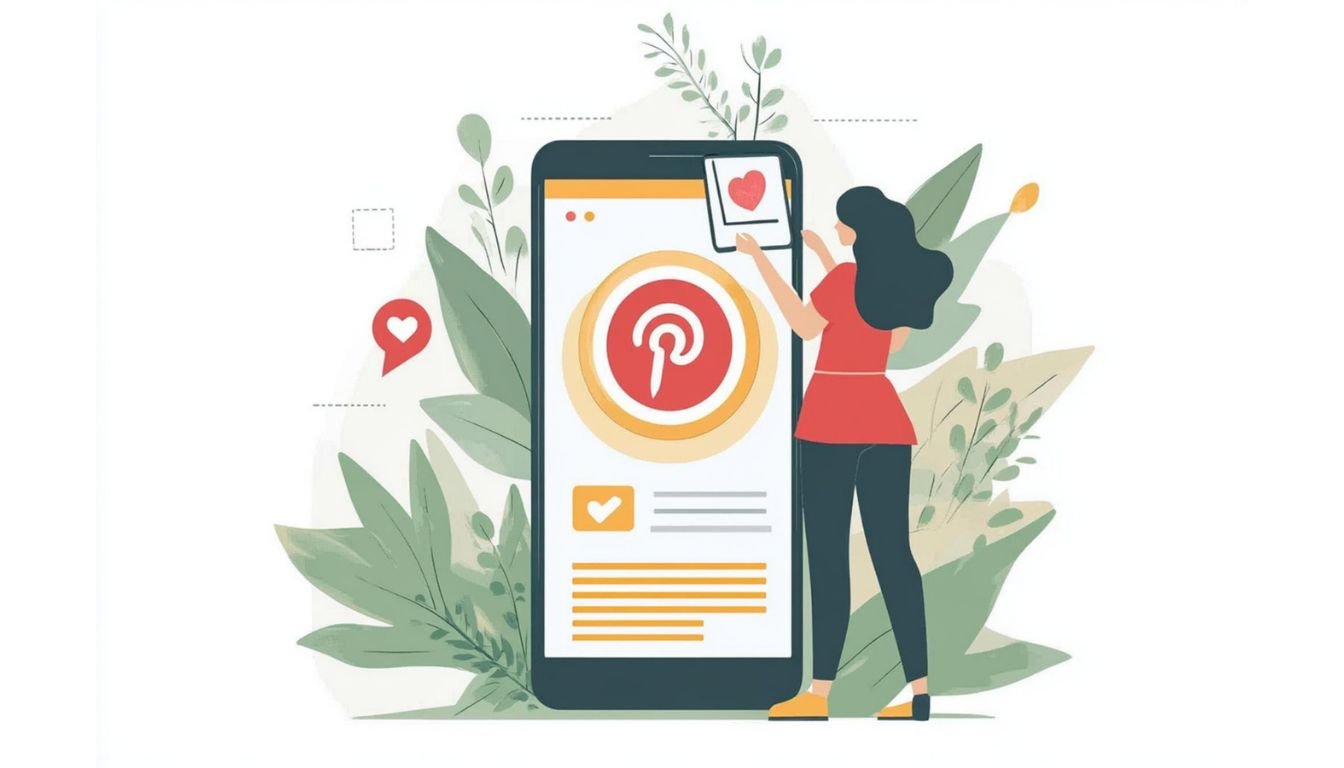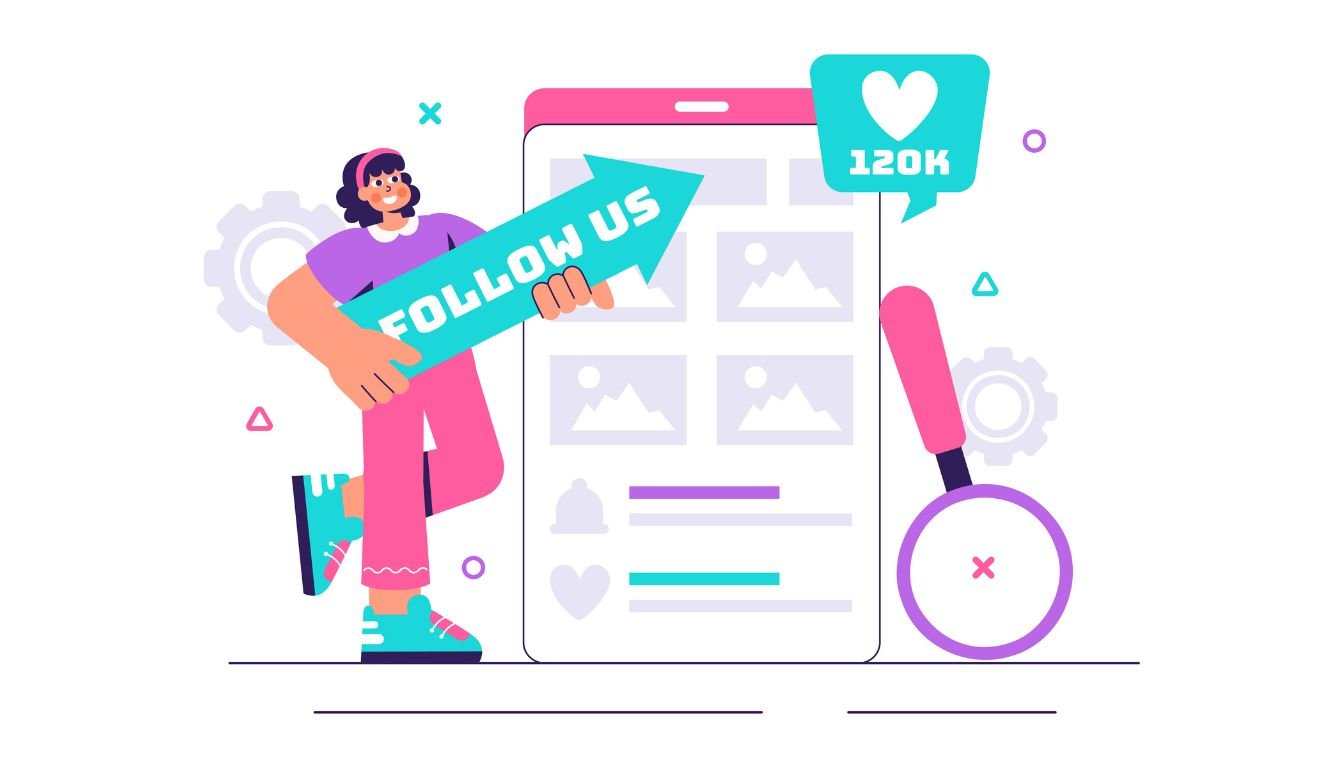Affiliate Disclaimer: Some of the links on this site are 'affiliate links.' This means if you click on the link and purchase the item, we may receive an affiliate commission.
Pinterest affiliate marketing is an exciting way to earn online, and Pinterest affiliate marketing offers a fresh spin on this strategy. If you’re new to the game, Pinterest affiliate marketing could be your secret weapon. With its focus on visuals, search functionality, and an audience that’s already in a shopping mindset, this platform can help you turn pins into profits through Pinterest affiliate marketing.
Key Takeaways
Pinterest affiliate marketing is growing rapidly, and understanding its potential can set you apart from other marketers.
- Pinterest works well for affiliate marketing because it acts like a search engine and stays visually focused.
- Create eye-catching, high-quality pins with clear, engaging descriptions to draw attention.
- Focus on relevant keywords in your pin titles and descriptions to improve visibility and attract clicks.
- Join group boards or create your own to expand your reach and connect with new audiences.
- Use Pinterest’s analytics to track performance, refine your strategies, and adjust to what works best.
- Consistency matters—post regularly, interact with followers, and keep your content fresh.
- Avoid overloading pins with text or promotional content; mix in helpful, thoughtful ideas to build trust.
- Direct people to valuable, relevant content on your site to enhance your credibility and boost conversions.
- Use affiliate links sparingly and follow Pinterest’s policies to maintain a positive experience for your audience.
- Stay patient. Growing an audience on Pinterest takes time but can be incredibly rewarding.
Why Pinterest is Perfect for Affiliate Marketing
Pinterest affiliate marketing is often considered one of the best avenues for earning passive income online. It allows for creativity in promoting products. And, developing a niche in Pinterest affiliate marketing can lead to stronger engagement.
You might think Instagram or TikTok are where the magic happens in affiliate marketing, but Pinterest offers unique advantages. It’s more than a social network—it’s a search engine, a visual planner, and a powerhouse for evergreen content.
Understanding Pinterest’s User Base
Pinterest’s users typically aren’t scrolling aimlessly. Many are searching for solutions, ideas, and things to buy. Over 450 million people use Pinterest monthly, and the majority are women, often in a planning or purchasing mood. For affiliate marketers, this means you’re speaking directly to a group that’s ready to shop. According to stats cited by Shopify’s guide to Pinterest marketing, 89% of users use Pinterest for purchase inspiration. That’s huge!
Evergreen Content for Long-Term Reach
Unlike Instagram stories or Facebook posts that fade into the background after a few hours, pins last a long time. Every pin is like planting a seed—it keeps growing. Pinterest’s search algorithm ensures that high-quality pins can show up in results days, weeks, or even months later. This makes it ideal for affiliate marketing because your pins continuously drive traffic to your affiliate links without extra effort. So, leveraging Pinterest affiliate marketing can lead to unique opportunities for growth.
Visual Appeal and Conversion Potential
Pinterest is all about aesthetics. A well-designed pin can draw users in and lead them straight to your links. People on Pinterest want ideas, and they’re likely to click through to learn more. The platform encourages this, making it easier for you to convert clicks into commissions. The visual aspect cannot be overstated; strong visuals drive clicks and clicks lead to earnings.
Getting Started with Affiliate Marketing on Pinterest

Are you wondering how to jump in and get started? Pinterest for affiliate marketing doesn’t have to be overwhelming. Let’s break it down into simple steps.
Setting Up a Pinterest Business Account
Start by creating a Pinterest business account. Not only will this help you appear more professional, but you’ll also gain access to analytics tools that tell you how your pins perform. If you don’t already have one, creating a business account is a fast and straightforward process. Pinterest even has guides to walk you through creating a business account. Once done, you’ll have unlocked features like ad management and performance metrics.
Choosing the Right Affiliate Programs
The key here is relevance. Say your Pinterest boards feature fitness inspiration—you’ll want affiliate programs tied to fitness products, workout gear, or healthy snacks. There are websites like ReferralCandy’s guide that can show you the top programs aligning with your niche. The better the fit, the higher your chances of success.
Optimizing Your Pinterest Profile
Make your profile shine! From your username to board titles, everything should be tailored to your target audience. Use keyword-rich descriptions, making it easy for users to find you and know what you offer. For example, replacing vague names like “My Ideas” with something specific like “Home Office Accessories” signals precisely what users can expect to see.
Strategies to Maximize Success
Once your account’s ready, these strategies can help you stand out and generate steady traffic.
Creating Multiple Pins per Post
Don’t pin once and forget. Instead, create several pins for each affiliate product or blog post. Experiment with different styles—variations in color, wording, or imagery can drastically alter performance. Visuals matter, and you don’t need a degree in graphic design. Tools like Canva offer free templates so you can create eye-catching pins in no time.
Rich Pin Implementation
Rich pins automatically sync information from your website to your Pinterest pins, ensuring they’re always up-to-date. They improve user experience and build trust with your audience. Follow Pinterest’s steps to enable rich pins seamlessly. If you’re unsure why they matter, just know they increase click-through rates. More clicks mean more money!
Utilizing Pinterest SEO
Pinterest functions more like a search engine than a social site, so SEO is essential. Use keywords naturally in your pin descriptions, board titles, and even image file names. For example, a pin about freelance productivity might include phrases like “best tools for remote work” or “freelancer tips” in the description.
Engaging with Group Boards
Group boards are a goldmine for traffic. Joining relevant boards gets your pins in front of audiences far beyond your followers. However, pick wisely; quality matters more than quantity. A Reddit thread touched on how smaller but active group boards can often outperform massive, low-engagement ones. Start small and build up.
Analyzing Performance with Pinterest Analytics
Understanding Pinterest affiliate marketing tools can boost your effectiveness. Metrics like impressions, engagements, and saves give you valuable insight into what’s working. Pinterest analytics helps you evaluate which pins gain traction and how you can replicate their success. If a pin about kitchen gadgets goes viral, that’s a hint—people want kitchen gadgets! Use these insights to shape your future strategy.
Pinterest Affiliate Marketing: FAQs for Beginners
What is Pinterest affiliate marketing?
Pinterest affiliate marketing involves creating “pins” that include your affiliate links. When users click on these links and make a purchase, you earn a commission. It’s a way to share content and products visually while monetizing your presence on the platform.
Do you need a blog or website to do affiliate marketing on Pinterest?
No, you don’t need a blog or website. You can share affiliate links directly within your pins. However, having a blog can help you build trust and provide more valuable content related to your products.
Is using affiliate links on Pinterest allowed?
Yes, but you’re required to disclose that your pins contain affiliate links. Including #ad or similar disclosures in your pin descriptions keeps you compliant with FTC guidelines and Pinterest’s policies.
How many followers do you need to start affiliate marketing on Pinterest?
There’s no set number of followers required. Even with a small audience, you can succeed if your pins are engaging and optimized for keywords to reach broader users through searches.
What kinds of products perform best on Pinterest?
Products that solve problems or inspire creativity typically do well. Categories like home décor, fashion, recipes, health, DIY, and parenting are popular because they align with Pinterest users’ interests.
How do you create the perfect pin for affiliate links?
Design visually appealing pins using tools like Canva. Use clear, attention-grabbing images, text overlays to provide context, and include a call-to-action (e.g., “Click to Learn More”). Optimize your descriptions with relevant keywords.
What are Rich Pins, and should you use them for affiliate marketing?
Rich Pins automatically pull detailed product information (like price and availability) from your content. Enabling them makes your pins more informative and professional, which can increase clicks and conversions.
How do you find the right affiliate programs for Pinterest?
Look for programs that match your niche and audience. Popular networks include ShareASale, Amazon Associates, and CJ Affiliate. Choose products you genuinely believe in to maintain trust with your audience.
Can you promote affiliate links with Pinterest ads?
Yes, you can run promoted pins to boost visibility. Just ensure your ad complies with both Pinterest and the affiliate program rules. Test different designs to see what drives the best engagement.
How do you optimize your account for affiliate marketing?
Set up a Pinterest business account, which offers analytics and extra features. Use keyword-rich descriptions for your profile, boards, and pins. Regularly analyze data to refine what’s working and what’s not.
How often should you post on Pinterest for affiliate marketing?
Consistency beats frequency. Posting 5-10 pins daily (original and repins) is a good starting point. Use scheduling tools like Tailwind to save time and post when your audience is active.
Can group boards help with Pinterest affiliate marketing?
Yes, joining relevant group boards allows you to share your pins with a wider audience. Make sure the board aligns with your niche to ensure better engagement.
Do you need to use keywords on Pinterest?
Absolutely. Pinterest acts like a search engine, so using keywords in your descriptions, titles, and hashtags helps your pins appear in searches. Tools like Pinterest Trends or Google Keyword Planner can guide your research. Leveraging Pinterest affiliate marketing trends will help to enhance your strategies.
How long does it take to see results with Pinterest affiliate marketing?
It depends on your consistency, strategy, and niche. Some people notice traffic and sales within a month, while others take longer. Successful Pinterest affiliate marketing requires continuous learning and adaptation. Pinterest is a long-term game, so patience is key.
How do you track the success of your affiliate pins?
Use Pinterest Analytics to monitor metrics like impressions, link clicks, and saves. Pair that with your affiliate dashboard to track conversions and identify high-performing pins.
Are there rules to avoid getting banned from Pinterest?
Yes. Avoid spammy behavior like overposting, misleading descriptions, or excessive promotion. Always disclose affiliate links and follow Pinterest’s community guidelines to avoid penalties.
What’s the best tip for beginners using Pinterest for affiliate marketing?
Focus on providing value first. Share helpful, inspiring, or entertaining content with your audience. Stick to a mix of 80% valuable content and 20% promotional to build trust and engagement.
Final Thoughts
Pinterest affiliate marketing is a smart move for beginners. By combining beautiful, engaging visuals with strategic SEO and optimization, you can unlock a steady stream of traffic and income. Stick to the essential strategies: create multiple pins, understand your audience, and keep refining through analytics. The platform rewards consistency and quality, so plant those seeds now and watch your affiliate marketing flourish over time.

